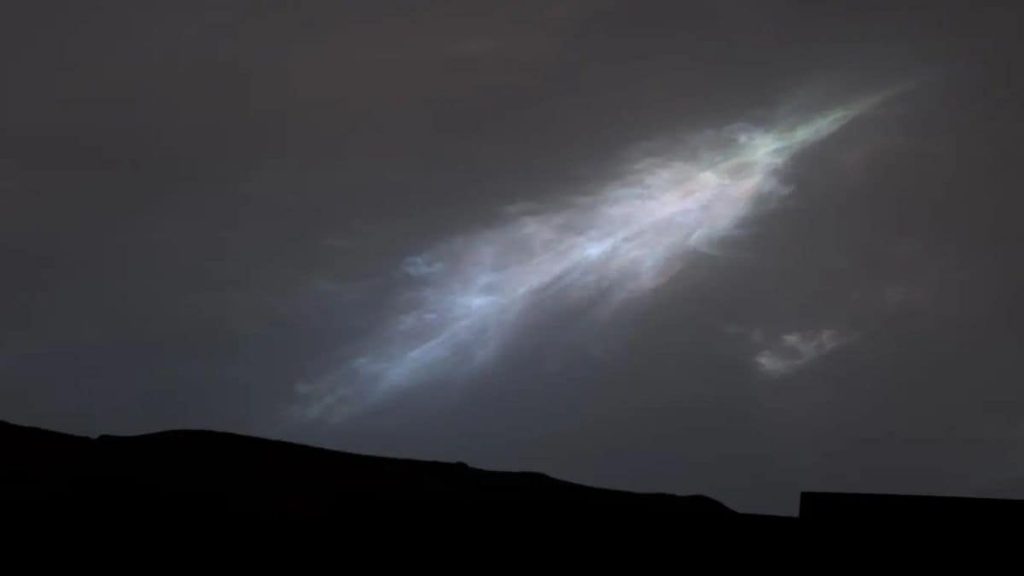NASA’s Curiosity Rover Captures Feather-Shaped Iridescent Cloud on Mars

A striking cloud formation was observed in the Martian sky by NASA’s Curiosity rover, revealing a feather-shaped structure tinged with iridescent colours. The phenomenon was recorded on January 27, 2023, shortly after sunset. Scientists analysing the image have indicated that such formations help in understanding cloud particle sizes and their growth over time. The event was part of a research initiative focused on noctilucent, or night-shining, clouds. A renewed observational campaign in January 2025 resulted in a video recording of twilight clouds exhibiting red and green hues drifting across Mars.
Cloud Formation and Composition
According to NASA’s Jet Propulsion Laboratory, these iridescent clouds are composed of either water ice or carbon dioxide ice particles. Their presence in the planet’s atmosphere provides insights into the weather patterns and climatic conditions of Mars. The interaction of sunlight with ice particles leads to the distinct colour variations seen in the images captured by Curiosity. Observations like these contribute to the broader understanding of how clouds form and evolve on the Red Planet.
Significance of Iridescence in Martian Clouds
Experts have noted that the iridescence seen in the Martian clouds is an indication of uniform particle sizes, which allows light to scatter in a way that produces a spectrum of colours. Research led by Mark Lemmon, an atmospheric scientist with the Space Science Institute in Boulder, Colorado, suggests that these optical phenomena provide valuable information on cloud particle growth. Scientists have also observed that twilight clouds made of carbon dioxide ice are appearing in specific locations on Mars, prompting further investigations.
Continued Atmospheric Studies on Mars
Monitoring cloud activity remains an essential part of Mars exploration. Researchers continue to track seasonal patterns, atmospheric conditions, and their potential impact on future missions. The Curiosity rover’s ongoing imaging efforts contribute to a better understanding of Martian meteorology and its evolving climate system. These findings add valuable data to existing research on extraterrestrial weather dynamics. NASA’s Perseverance rover, located in the northern hemisphere, has yet to observe similar cloud formations, raising questions about regional atmospheric differences.




